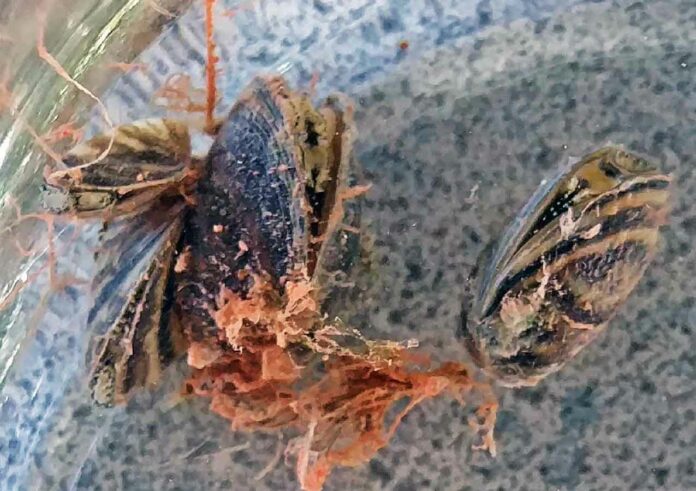As officials hope for progress on prospects to reopen the long-closed San Justo Reservoir, one of the effort’s biggest proponents pleaded with the county board this week for help.
Marty Martinez, owner of Hollister Bait & Tackle, spoke to the board during a report Tuesday.
He requested that the county board approach the San Benito County Water District in an effort to reopen the reservoir off Union Road that has been closed since 2008 due to an invasive zebra mussel infestation. He said it’s time to “unite and come to the water board and force them to act on this.”
“We can’t go forward unless they approve it,” Martinez said.
Board Chairman Mark Medina allotted Martinez more than the usual three minutes allowed for public comment.
San Justo Reservoir, once a popular fishing spot off Union Road near Hollister, closed in early 2008 when the exotic mussels were found at the location where federal water is stored and managed by the San Benito County Water District. The mussels can cause damage to ecosystems and infrastructure, leading to a closure for the public to prevent their spread.

The feds are looking at using a substance called potash – which Martinez called it “essentially potassium” – to treat and kill the mussels. Martinez said the U.S. Bureau of Reclamation is wasting “over $3 million” on something the agency isn’t sure will be effective.
“One way for sure to kill them is to have the lake drained completely and left dry for 30 days,” he said. “The problem would be eradicated.”
Then it could be re-filled and re-stocked with fish, he said.
“Fishing teaches you things you can’t learn in school,” Martinez said. “It teaches you patience, stillness and hope in anticipation of catching a fish.”
Medina followed up by noting how there could be some movement soon on the issue, and how Congressman Jimmy Panetta recently visited Hollister and vowed to speed up the process.
Denver Technical Services Center is finishing a draft eradication plan, with the U.S. Bureau of Reclamation planning to release the document for peer review this spring and for public review then as well.
“That project, it’s been tagged for inclusion in a nationwide effort as a case study for collaborative conservation and an adaptation strategy toolbox,” Panetta said at an April town hall, adding how it’s a joint venture of the Southwest Climate Hub, U.S. Fish & Wildlife Service, the Bureau of Reclamation and the Forest Service.
Medina said Panetta will be back June 25 for a town hall and an update.
“I do think we need to come up with a plan,” Medina said. “We need to work together. Everything you said is, I think, echoed by everybody up here.”
Supervisor Peter Hernandez said he has memories of fishing there with his son, who now wonders why it’s no longer open.
“Now I’m definitely very focused on making sure that happens,” he said of reopening the reservoir.
Supervisor Anthony Botelho said it’s a highly complicated issue. He said he’s not overly optimistic considering he’s been pushing higher-ups for years without much progress.
“This is not a local issue. It’s not local,” he said. “It’s been frustrating to see how slow government can work.”
Officials briefly pondered the idea of having a vendor manage the reservoir using equipment that wouldn’t leave the site, minimizing the risk of spreading mussels elsewhere.
Photo: Mussels shown in image courtesy of the federal government.




